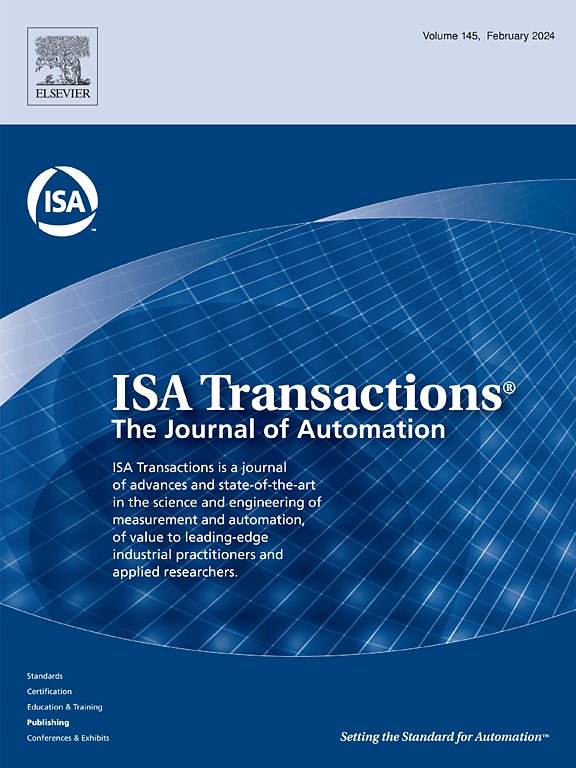CTNet:用于时变速度下风力涡轮机故障诊断的数据驱动时频技术。
IF 6.5
2区 计算机科学
Q1 AUTOMATION & CONTROL SYSTEMS
引用次数: 0
摘要
从风力涡轮机行星齿轮箱和轴承收集到的非稳态故障信号通常显示出间隔很近的瞬时频率 (IF),甚至是交叉的 IF,这给现有的时频分析 (TFA) 方法带来了挑战。为解决这一问题,我们开发了一种数据驱动的 TFA 技术,称为 CTNet。CTNet 是一种结合了全卷积自动编码器网络和卷积块注意模块(CBAM)的新型模型。在 CTNet 中,编码器层首先被设计用于提取由一般线性啁啾变换(GLCT)计算出的时频表示(TFR)的粗略特征;其次,解码器层被组合用于恢复和保存关键时频特征的细节;最后,引入 CBAM,自适应地探索 TFR 的信道和空间关系,更多地关注近间隔或交叉频率特性,并有效地重建 TFR。CTNet 的有效性通过近间隔或交叉中频的数值信号以及风力涡轮机行星齿轮箱和轴承的实际信号得到了验证。与最先进的 TFA 方法的对比分析表明,CTNet 在表征非稳态信号方面具有较高的时频分辨率,在检测风力涡轮机故障方面具有更好的能力。本文章由计算机程序翻译,如有差异,请以英文原文为准。
CTNet: A data-driven time-frequency technique for wind turbines fault diagnosis under time-varying speeds
Nonstationary fault signals collected from wind turbine planetary gearboxes and bearings often exhibit close-spaced instantaneous frequencies (IFs), or even crossed IFs, bringing challenges for existing time-frequency analysis (TFA) methods. To address the issue, a data-driven TFA technique, termed CTNet is developed. The CTNet is a novel model that combines a fully convolutional auto-encoder network with the convolutional block attention module (CBAM). In the CTNet, the encoder layer is first designed to extract coarse features of the time-frequency representation (TFR) calculated by the general linear Chirplet transform (GLCT); second, the decoder layer is combined to restore and conserve details of the key time-frequency features; third, the skip connections are designed to accelerate training by linking extracted and reconstructed features; finally, the CBAM is introduced to adaptively explore channel and spatial relationships of the TFR, focusing more on close-spaced or crossed frequency features, and effectively reconstruct the TFR. The effectiveness of the CTNet is validated by numerical signals with close-spaced or crossed IFs, and real-world signals of wind turbine planetary gearbox and bearings. Comparison analysis with state-of-the-art TFA methods shows that the CTNet has high time-frequency resolution in characterizing nonstationary signals and a much better ability to detect wind turbine faults.
求助全文
通过发布文献求助,成功后即可免费获取论文全文。
去求助
来源期刊

ISA transactions
工程技术-工程:综合
CiteScore
11.70
自引率
12.30%
发文量
824
审稿时长
4.4 months
期刊介绍:
ISA Transactions serves as a platform for showcasing advancements in measurement and automation, catering to both industrial practitioners and applied researchers. It covers a wide array of topics within measurement, including sensors, signal processing, data analysis, and fault detection, supported by techniques such as artificial intelligence and communication systems. Automation topics encompass control strategies, modelling, system reliability, and maintenance, alongside optimization and human-machine interaction. The journal targets research and development professionals in control systems, process instrumentation, and automation from academia and industry.
 求助内容:
求助内容: 应助结果提醒方式:
应助结果提醒方式:


